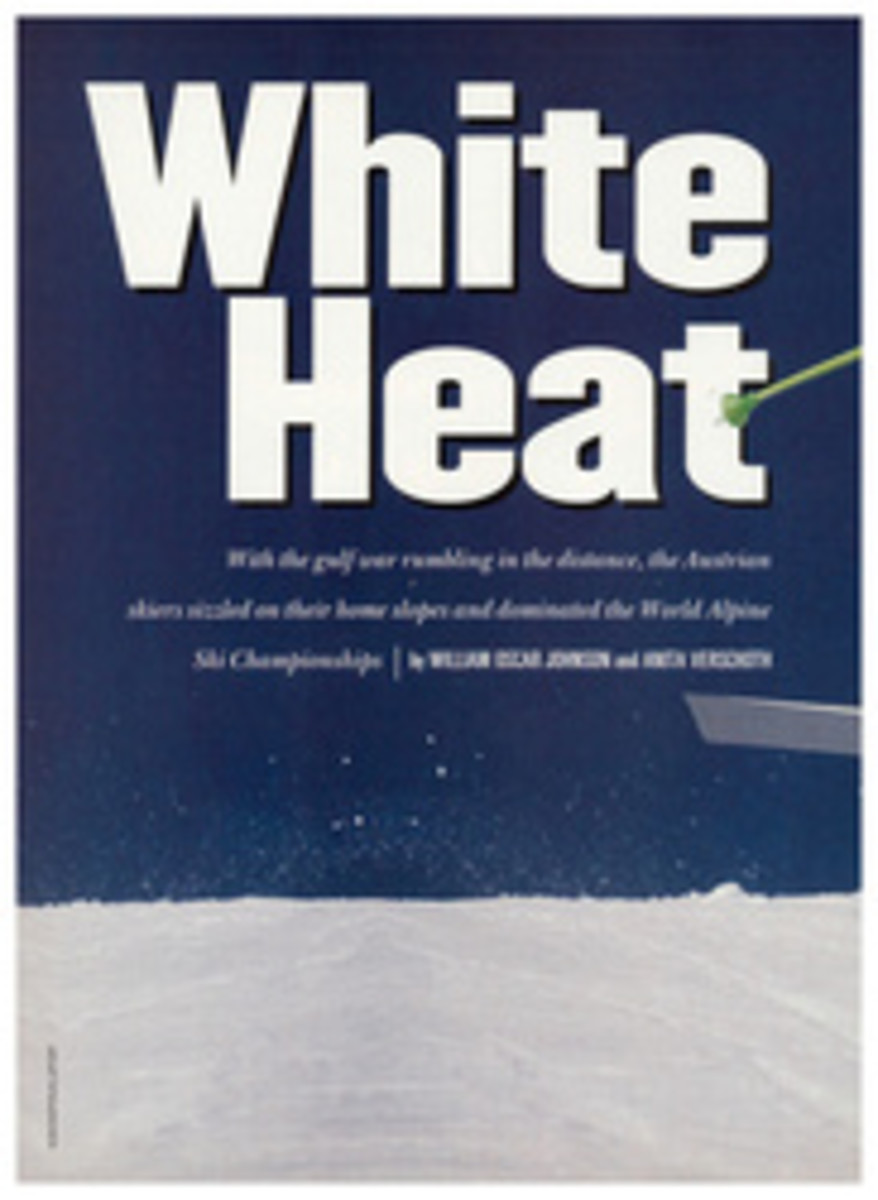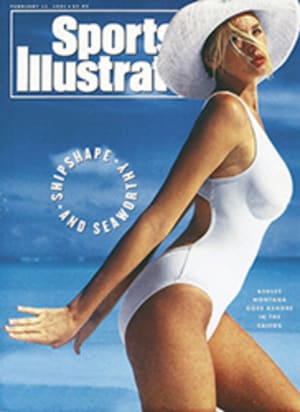
To the Point
Tim Hardaway went looking for a house in the dun-colored hills near Oakland the other day, something that could accommodate a man of his particular dimensions, neither too grand nor excessively snug. It had to be just right. He would know it when he saw it. He didn't see it. "Back in Chicago," Hardaway says, referring to his hometown, city of big shoulders and small mortgages, "you can get a million-dollar house for $300,000, maybe $400,000. Out here a million-dollar home can cost you as much as $800,000."
In only his second season with the Golden State Warriors, Hardaway, who is generously listed at six feet, is a million-dollar point guard in a low-rent, low-rise body. Until three weeks ago he had never scored more than 36 points in a college or pro game, but then within four days he scorched the New Jersey Nets for 35 points and 10 assists, the Boston Celtics for 37 points and 10 assists and the Philadelphia 76ers for 40 points and 14 assists. That performance elicited this succinct assessment from the Sixers' All-Star forward, Charles Barkley: "Tim Hardaway can't be stopped." Obviously the Western Conference coaches agreed. They selected Hardaway to play against Barkley in the All-Star Game this week in Charlotte.
Hardaway attends to the traditional responsibilities of the point guard, dealing out 9.8 assists per game (sixth-best in the league), while scoring 23.5 points a game. That is nearly nine more than he averaged last season, when he and the San Antonio Spurs' center David Robinson were the only unanimous selections to the All-Rookie team. "He's so much better than he was last year, and he was spectacular," says L.A. Clipper coach Mike Schuler, who developed an appreciation for Hardaway's game when he was an assistant with the Warriors in 1989-90. "It's as if he's on some kind of mission."
After his devastating march through the East, Hardaway seemed to shrink back to size on Jan. 22, when Golden State built—and then blew—a 26-point second period lead against the Houston Rockets. The Rockets had pulled ahead by three while Hardaway was mired in a 2-for-5 fourth-quarter shooting slump and on his way to being lit up for a career-high 38 points by the previously undreaded Kenny Smith. "I didn't know, as a coach, how to save that game," the Warriors' Don Nelson said afterward. "Everything we tried failed. Even when we were successful, somehow we would end up missing the layup, or the ball would squirt out of someone's hands, and they'd get it. It was one of those things you just watch as a coach, and you think, Tonight's not going to be the night." During a timeout with 3:39 to play, Nelson asked Hardaway if he needed a rest. "I just told him, 'No, I got something for you,' " Hardaway said. "I had to do something, so I just tried to take the game over."
And he succeeded in doing exactly that. After he fired up one more clanger, Hardaway launched a jump hook from the baseline that just cleared the outstretched arms of the Rockets' entire front line before it rattled in and broke a 111-111 tie. When Houston drew even again, Hardaway made three foul shots. A local newspaper writer once wrote that Hardaway shoots "split-fingered free throws," and these three certainly fit that description.
Golden State was clinging to a one-point lead when Hardaway took a pass from Chris Mullin with 17 seconds left, then stood at the top of the free throw circle with the ball held low in both hands. As the shot clock ticked down to less than 10 seconds, Hardaway remained perfectly still, his gaze fixed straight ahead at Smith. "I look in people's eyes and see how they're looking at me," Hardaway said. "If you look at somebody, and they're glancing away or looking down at your waist, you know that they're scared." He could not find Smith's eyes. "He kept looking away," Hardaway said. "I could see he was scared."
So there Smith was, having what should have been the finest night of his career, losing a staring contest in front of 15,025 people. He backed away from Hardaway warily, as if he were backing away from a growling dog. There was a reason for this retreat: Hardaway has developed a move to the basket so insidious that almost no one has been able to stop it.
Hardaway was a freshman at the University of Texas-El Paso when he saw Syracuse guard Pearl Washington use the move in a televised game in 1986. "I wasn't even quite sure what he'd done, but I knew if I could perfect it, it would be a weapon for me," Hardaway says. When he went home during that summer—1986—he practiced the move against his younger brother Donald for two straight days before he began tormenting strangers with it.
This is the way it works. Hardaway bounces the ball through his legs, the ball going from his right hand to his left. Then he dribbles it again—this time in front of his body—from left back to right. What makes the crossover dribble so wickedly effective is that Hardaway does it at a full gallop. "It can't be stopped," says Magic Johnson of the Los Angeles Lakers, still glassy-eyed. "It's bang, bang, and you're dead."
Smith's only hope was to keep backing up—the classic way to guard against a driver is to play him loose so that the defender has more time to react to the move toward the basket—and that's what he was doing when Hardaway uncoiled his arms and sent the ball toward the basket, the shot fluttering upward with so little backspin that spectators could read the NBA logo on the ball as it drifted through the air. "When I shot it, I heard a lot of 'Ooooooh, ohhhhhh,' " Hardaway said afterward, "and then it went in, and everybody said, 'Yeah!' "
This tendency toward sounds of apprehension among Warrior fans is brought on by certain aesthetic shortcomings in Hardaway's delivery. "A lot of people on my own team say it's very ugly," says Hardaway, unperturbed. "But it's my shot, and nobody can seem to stop it. I love my shot. It may look bad, it may not have rotation, but it goes in." Which is exactly what it did on this occasion while Smith was still busying himself trying to prevent a layup. All told, Hardaway scored 10 straight Warrior points in the two decisive minutes of a 123-116 Golden State victory.
This was not the first time Hardaway had rescued the Warriors. He scored Golden State's final 13 points in a 112-111 victory over Sacramento on Nov. 17. In his 35-point eruption against the Nets on Jan. 15, he scored the Warriors' final six points in a 112-111 overtime victory; his last two shots were fallaways from behind the backboard.
"When the game is on the line, you have to wrestle him for the ball," says Mullin, Golden State's All-Star forward. "He's got the most confidence I've ever seen in a human being." Nelson isn't altogether sure Hardaway is human. "He's made more big plays, taken over more games and led more runs than anybody we have," Nelson says. "He won three games this year that we were out of. When the hour is the bleakest, he saves the day. I think he's Mighty Mouse."
A mouse in a cape with an ugly shot was not exactly what Bay Area fans had in mind when the Warriors, who were supposedly seeking a big man, drafted Hardaway with the 14th pick in the 1989 draft. "He wasn't a popular choice," Nelson concedes. On the eve of his Golden State debut, Hardaway contracted a case of tonsillitis, but at the time he said nothing and tried to play through the discomfort.
"We told everybody he was going to be terrific, and then, of course, he bombed in his first six or seven games," Nelson says. After a 30-point loss in the Warriors' opener at Phoenix last season, Nelson described Hardaway's performance as "awful, just awful." For the first three months of the season, that was also a fairly accurate description of Hardaway's mood. "Everybody was booing me, and I was making a lot of turnovers," he says. "I'd go home and not want to show my face."
Over the summer Hardaway took at least 300 shots a day, making himself such a threat from long range that he has also been invited to the NBA's three-point shoot-out during the All-Star festivities. But in the process of reinventing himself, Hardaway never found a way to transform his size. He had expected to grow to his father's height of 6'4", but he seems to have been equally influenced by his mother, Gwen, who is 4'11" and carries the mail for the U.S. Postal Service in Chicago. "I don't think of myself as a little guy," he says. 'I think of myself as 7'1" when I go in there against Patrick Ewing. But I didn't grow, so I just had to go with what I had."
Some people are too big even for million-dollar houses. No matter how much they cost. "Tim always wanted to be taller," says Gwen Hardaway, "but he said, 'If I can't be taller, I might as well be great.' "
PHOTO
PETER READ MILLER
Hardaway confounded Smith (left), as he has so many others, with his crossover dribble.
PHOTO
NATHANIEL BUTLER/NBA PHOTOS
Hardaway's jumper makes up in accuracy what it lacks in aesthetics.

